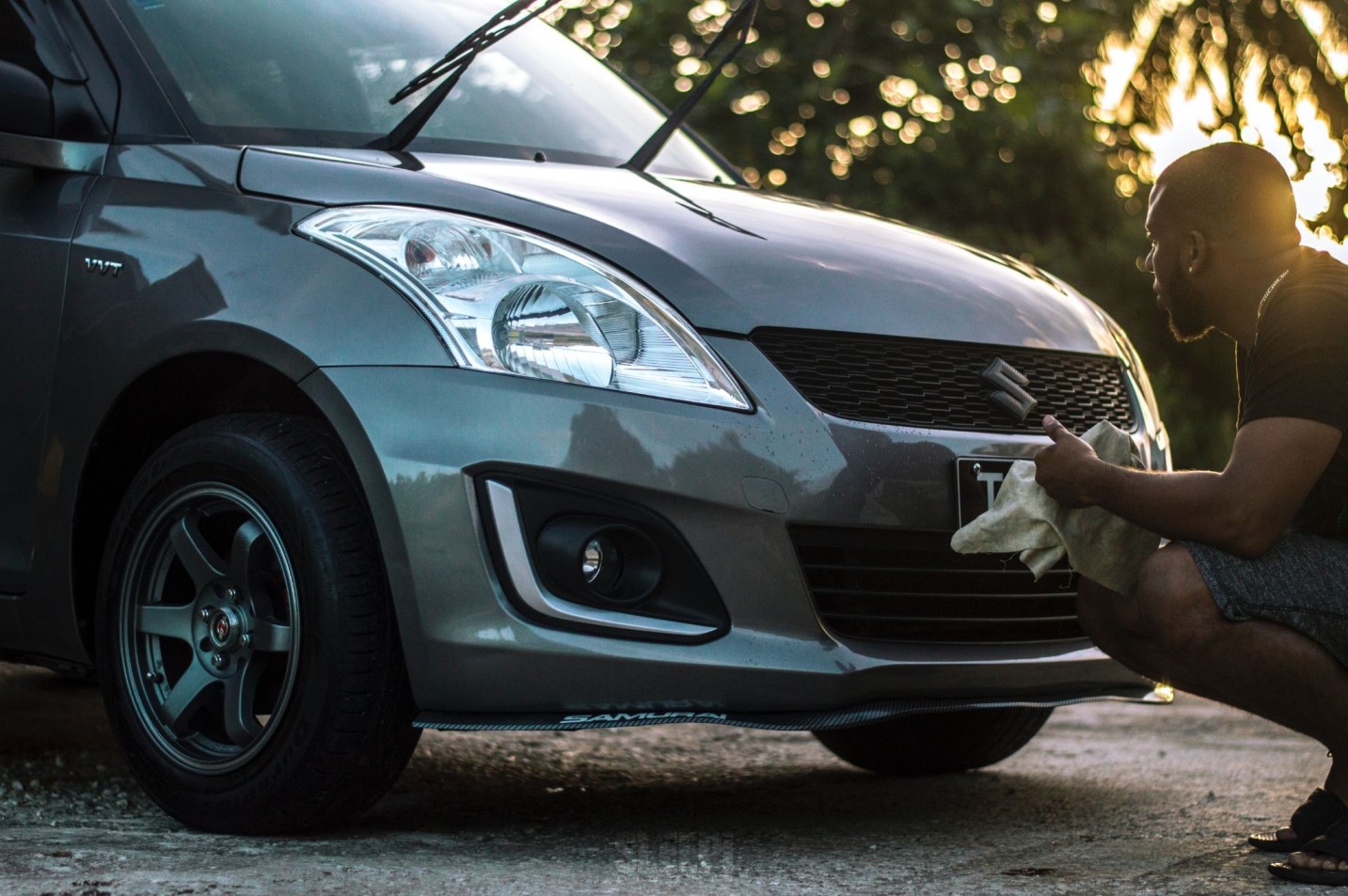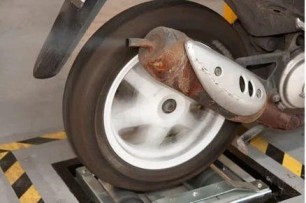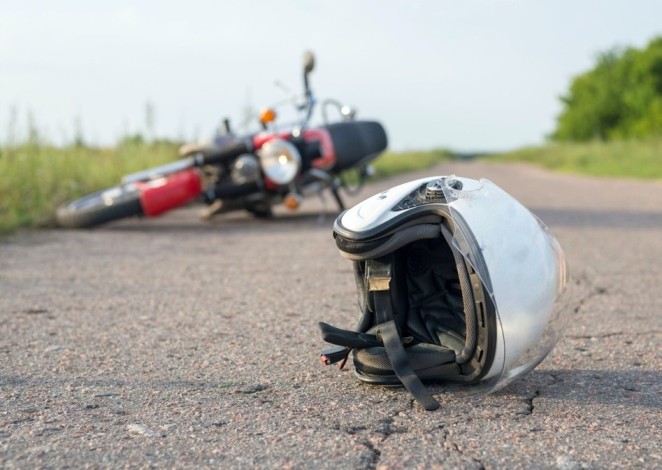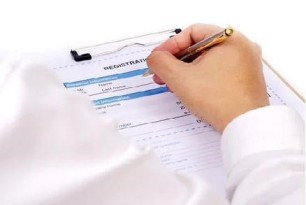General Insurance Blogs, Articles & Updates by - Magma HDI
Have us call you
- RENEW YOUR POLICY
- BUY NEW POLICY

How to maintain the paint of your car
A shiny car with an attractive colour is a head-turner for anybody. After all, it's also a reflection of your personality. Yet, a few years down the line, the paint on the car usually loses its sheen and begins to look dull and dead. Failure to provide regular care to the car paint is the most common error car owners make.
Getting a brand new paint job can be heavy on your pockets and lower the value of your vehicle, but if you take care of things, your car's paint lasts for years. Along with below mentioned little important tips about proper care of the car's paint, we also recommend you to possess a car insurance that offers you coverage against any damages to the vehicle. You can also check online car insurance for the best premium.
1. Cover up your Car: Sometimes, the simplest of things are the most efficient ones. For example, putting a cover on your car for as long as possible is the key to preserving the paint. Also, owners who park their vehicles in an open area have to take special note of this point as their cars are more prone to damage by bird droppings, direct sunlight, and dust.
2. Regular Car Washes: A car wash at regular intervals would go a long way in protecting the paint of the car. However, only washing won't help; you need to wash it correctly to get the best results. For that, use a sponge, and a car shampoo specially made to suit a car's paint. Never use detergents and cloth. They cause more harm than good.
3. Drying is Equally Important: Washing alone isn't enough. If you leave your car to dry on its own, you're doing it wrong. The leftover water can cause a lot of damage to the paint. Always dry your vehicle right after a wash, that too in the correct way. Use a microfiber towel or a weave fibre cloth for the drying process.
4. Wax your car. Do not polish: While both of them are the techniques to bring out the sine on your car, there's a big difference between them. Polishing brings out the lower layer when a layer of the paint job is removed. On the other hand, waxing adds an extra layer of protection to the paint and is always suitable for your car.
5. Repair the damages: If your car has suffered from scratches and rust already, take the help of a car paint shop and repair the damages. The longer the scratches stay, the harder it takes to treat them and may permanently damage the paint job. The minor scratches can cause a lot of damage to the surrounding area of the body paint. So do not neglect these minute things and fix them before they create trouble for your car.
Additional coatings like vinyl wraps, paint protector film, and clear coat protectors can bring an extra layer of security for your car paint. Following these simple tips will surely turn your dull looking car into a shiny prize. As stated earlier, pick a suitable online car insurance plan as early as possible that will benefit you and your vehicle for an extended period.

Essential tips to buying a second-hand two-wheeler
Two-wheelers are the most preferred travelling option for people from home to the workplace as they help your way through traffic smoothly. Moreover, as they have become daily support for middle-class families, many have dreamed of buying a two-wheeler, mainly since the pandemic emerged.
There are plenty of benefits to buying a second-hand two-wheeler. But before you purchase one, there are a few important things you need to keep in mind to ensure that you get the best value for money. For example, you don’t want to buy a vehicle that troubles you with additional money on maintenance or repair.
Below are a few tips to help you get the best deals for your second-hand two-wheeler.
1. Understanding the purpose of your vehicle:
If you need a vehicle for long trips, you will have to search for a high-performance touring bike to make your journey pleasant. Similarly, if you need a two-wheeler for your daily use, you may look for a comfortable motorcycle or scooter with a decent average.
2. Finding where you can purchase two-wheelers:
There are plenty of resellers available, both online and offline. You can directly approach offline showrooms of used two-wheelers or ask your friends for referrals. You can also check for resellers online to find a credible seller. It always helps if you connect with them in person and understand all the details.
3. Check the two-wheeler thoroughly:
Sometimes what you see online can be deceiving. Therefore, it is essential to check the vehicle personally. When you check the two-wheeler in person, you can observe the minor details such as any scratches, dents, and how well it is maintained. No matter where you buy the vehicle from, there are two necessary checks:
• Mechanical check
• Paperwork
In mechanical check, always look out for any rust, scratches, engine check, oil check, oil leakage (if any), dents, mileage, accident damage, brakes, air cleaners, gears, clutch, how many kilometres it has run already, and more.
Similarly, you need to check for a PUC certificate, RC book, service history, tax certificate, NOC, and more for paperwork.
4. Ask for a test drive:
The best way to know if the vehicle works appropriately and suits you the best is to take a test drive. Taking a test drive will help you understand if you are comfortable with the bike’s performance and power. Even if your bike looks perfect, it may not be a comfortable ride for you. Therefore, ensure that you do not miss out on the test drive.
5. Know the market value and negotiate well:
Once you are satisfied with the vehicle’s condition and the documents, you can do thorough research online about the current market value of the two-wheeler you are purchasing. You can talk to the seller and negotiate for the final price you are willing to pay. Once you and the seller come to a final price, you can sign the official paperwork and make the payment!
The tips mentioned above can help you pick the best two-wheeler and ensure that you are getting the best deals! But remember that buying a second-hand two-wheeler is just the first step. You need to ensure its safety by adding a layer of protection in the form of 2 wheeler insurance. You may opt for 2 wheeler insurance online and avail exciting deals and lower premium options offering the best value-to-your-money.
Click HERE to buy 2 wheeler insurance online for your two-wheeler.
Disclaimer: The information provided above is for illustrative purposes only. To get more details, please refer to policy wordings and prospectus before purchasing a policy.

How to keep your blood sugar under control
“Blood sugar” is termed as the amount of sugar present in the bloodstream of a body at a given time. Glucose is known to be the primary source of energy for a body. Therefore, having a stable blood sugar level is immensely important to carry a healthy lifestyle.
If the sugar level is disturbed, it can result in dullness in energy, anxiety, moodiness, fatigue, improper sleep, food cravings, brain fog, and diabetes if ignored for a longer time. Blood sugar can get out of control for two major reasons: either too much glucose or too little glucose for the body. In the first condition, your body gets more sugar than the body is habitual to, and in the second case, sugar is supplied in an inadequate amount. A balanced sugar level ensures sufficient quantity of glucose in the body.
Let’s understand 6 effective ways to keep your blood sugar level stabilized:
1. Daily exercise – Regular exercise helps maintain weight and improves insulin receptivity. An increase in the receptivity of insulin simply means better absorption of the sugar existing in the body. So remember, daily exercise is the most crucial aspect of the blood sugar management plan, and you should not skip it.
2. Tracking sugar levels – Monitor your blood sugar at regular intervals. It helps you track the sugar level and the changes you need to keep the levels managed.
3. Keep an eye on your diet – A well-planned diet is necessary for keeping blood sugar in control. The carbohydrates from foods are further broken down into sugars to provide a source of energy to the body. Hence, a low-carb and more fibre diet is ideal for balanced sugar levels. A rich fibre diet plays a preventative role and helps maintain your blood sugars.
4. Hydration – As a means to prevent your kidneys from flushing out the excess sugar in case of dehydration, drinking enough water throughout the day is very necessary. Water also ensures a lower risk of high blood sugar.
5. Quality sleep – Improper sleep or lack of adequate sleep can affect blood sugar and insulin receptivity. It releases growth hormones which may lead to weight gain and disturb the production and supply of sugars in the body. Avoiding caffeine before going to bed and sleeping in a cool and dark room helps you with a sound sleep.
6. Moderation – Maintaining moderation in daily activities will eventually lead to balanced blood sugar levels. Therefore, diet, weight, and proper exercise should be in a calculated proportion. Small steps to keep you active in the right direction can yield significant results in improving or preventing blood sugar.
Any diabetic person is not restricted from having health insurance and can get help for the care through a good health insurance policy. There is coverage of both type 1 and type 2 diabetes in a diabetes health insurance policy. In addition, health insurance also provides features such as illness related to diabetes and all costs and expenses for the treatment. Health insurance with Medicare advantage plans will also cover the cost of insulin. Make sure to check the benefits of the health insurance before you buy a health insurance policy.
WANT TO BUY AN IDEAL HEALTH INSURANCE PLAN? CLICK HERE FOR MORE INFORMATION…

How can IDV and NCB benefit your two-wheeler
Understanding that two-wheeler insurance is as important as your health insurance because your vehicle needs coverage and security too, is very important. Not having insurance coverage leaves you vulnerable to financial damages during unfortunate accidents. But with insurance and its premium, there comes two more necessary factors, IDV and NCB.
If you are a first-time insurance buyer, then understanding IDV and NCB will help you decide on better insurance for your two-wheeler. Let's understand them and their benefits in detail.
Insured Declared Value (IDV) tells the actual market value of your two-wheeler. It's the highest sum of the amount insured that your insurance provider has promised to you. In case of theft, accident, or total loss of the vehicle, you will get compensation as per the IDV of your two-wheeler. Likewise, you can claim it in case of damage or replacement cost of your two-wheeler.
Two-wheeler is a tangible asset that doesn't always stay new. Hence, its value depreciates over the period, and as it becomes older, its premium amount also gets lesser. As a result, the IDV also reduces.
Never declare lower IDV than your bike's current market value to get a lower insurance premium. In case of any bike theft or total damage, your claim amount will be relatively much lower, thus making a significant loss to you.
No-Claim Bonus (NCB) is the total accumulated amount yearly. As its name suggests, it is a reward that the policyholder gets during insurance renewal for the two-wheeler. This bonus is offered in the form of a concession of the premium paid on insurance by you.
Below are the points why IDV and NCB play an essential part in determining your vehicle's insurance premium:
1. If you want to conserve your benefits of NCB, but unfortunately, meet with some mishaps, then you stand no chance to claim your bonus. A 'protection cover' can be helpful for such situations, which you can add to your NCB. It is nearly 10% of your premium amount. Though the number of claims are limited, this still helps to conserve your NCB bonus.
2. The main advantage of NCB is that it is more beneficial to the policyholder, not the vehicle. For example, if you opt a NCB for a new 2-wheeler, you can transfer it from your old two-wheeler to the new vehicle.
3. Your IDV mainly depends on the age of the vehicle. The other factor in deciding on IDV is the condition of your two-wheeler. So, it is crucial to evaluate IDV correctly, which further helps you with better insurance with a suitable premium.
4. When you opt for renewing your 2-wheeler insurance online, keep in mind that your premium depends on IDV. Lesser the age of the bike means higher IDV and higher premium.
As a final piece of advice, if you want to save more on insurance, then declare the correct IDV of your vehicle and get the benefit of your NCB. Both NCB and IDV balance your insurance premium and the cover to your two-wheeler.
LOOKING FOR RENEWAL OF YOUR TWO-WHEELER INSURANCE ONLINE? CLICK HERE FOR THE BEST POLICY…

Best tips on claiming a third-party two-wheeler insurance
In recent years, people often inquire about the mandatory two-wheeler insurance and the strict regulations and penalties if a vehicle doesn't comply with an insurance policy.
Third-party 2 wheeler insurance covers the loss incurred by the property of a third-party or third-party injury by your vehicle. The third-party plan also covers the compensation in case of the death of the third party person. This insurance does not provide you with the option of choosing add-ons, nor does it offer the cover for your own vehicle damage like in the Comprehensive Insurance Policy.
But, the premium here is comparatively lower than that of the Comprehensive Plan, which as the name itself suggests, is a wide range of overall insurance for your vehicle. Therefore, it is always advisable to opt for the Comprehensive Policy for more features and a wider coverage option, including the mandatory third-party 2 wheeler insurance.
Now, read below the stepwise guide on how to claim third-party 2 wheeler insurance. Consider a situation where damage to your two-wheeler is caused by another vehicle in an accident. To file a claim to your insurance agency towards the medical expenses and repair of the vehicle under third party insurance, you need to follow the given steps:
1. Take down the vehicle's details involved in the accident and of the vehicle owner
2. Try and click photographs of your damaged two-wheeler
3. Look around for any surveillance cameras or eye-witnesses and note down their contact details
4. File a First Investigation Report (FIR) at the nearest police station from the event site
5. Inform the insurance company about the incident and follow their instructions for further action
6. File a case with the Motor Accident Claims Tribunal Court with the help of a lawyer. Attend the court proceedings, inform the court of the actual occurring and submit all the required documents and details
7. Share the court's order with the insurer, and you will receive compensation for the expenses of the damage
8. Always remain truthful and honest on your part without hiding anything from the insurance company. You may invite trouble by making a false claim or if the fault is on your part
Documents required at the time of making a third-party 2 wheeler Insurance Claim:
1. Driving License
2. Registration Certificate (RC) of the vehicle
3. Insurance Policy Documentation
4. Pollution Under Control (PUC) Certificate
5. First Investigation Report (FIR) of the incident
6. Receipt or bill of any vehicle repair
7. Duly filled and signed claim form
8. Duly signed Satisfaction Voucher (SV) or Discharge Voucher (DV)
Do not become aggressive or angry at any time and remain calm. It will help you think of the next step more efficiently. Trust the 2 wheeler insurance and be patient throughout the process. But, do not delay in taking action and starting the process. Avoid agreeing upon any monetary settlements as they qualify to be illegal.
It is always better to be cautious than to claim insurance for damages. So drive carefully and follow all the safety measures!
APPLY FOR THE BEST THIRD-PARTY TWO-WHEELER INSURANCE FOR YOUR VEHICLE HERE…

Guide for transferring your bike registration number while relocating to another state
Relocating to another state appears to be a daunting task if you’re experiencing it for the first time. There are multiple things to take care of while planning a relocation. From packing stuff and moving to another state to adjusting to the changing environment can irk you badly.
What worries you the most is the transfer of your bike registration that needs to be thoroughly examined during the entire relocation process. You need to acquaint yourself with the registration process of the new state and accordingly schedule your timelines for the same. This is indeed a cumbersome task, but we are here with our guide to make this process a swift one before it turns out to be a daunting task.
1. New state, fresh registration:
There are two scenarios that you need to understand. First, if you are relocating for less than a year, you don’t need to transfer the RC. But, if you’re planning to settle in the new state for more than a year, then you will have to go through a transfer process. Initially, you need to visit the RTO near your area and get a No Objection Certificate (NOC) as clearance for your bike. Then, after transferring to the new state, you will have to apply for fresh registration of RC of your motorcycle in the RTO of the new state.
2. What documents to carry?
Following is the list of documents required for the re-registration process.
• Original copy of Previous Registration Certificate.
• Three copies of Form 28 or the NOC issued by your local state’s RTO.
• NOC obtained from the local police station.
• NOC from Traffic police personnel.
• Form 20 as the application for the registration of the motor vehicle.
• Form 27 as the application for the assignment of a new registration mark to the motor vehicle.
• Attested copy of address proof.
• Attested copy of valid insurance.
• Attested copy of the Pollution Under Control Certificate (PUC).
• Copy of PAN Card or Form 60 and 61
3. Visit the RTO of the new state and complete the re-registration:
Visit the local RTO at your new location with all the above documents and fill your application for re-registration. Carefully provide all the essential information and verify all the documents thoroughly before submitting them to the officials. Once you fill the form and submit all your documents, you’re through your bike registration in the new state.
4. Fill the new road tax challan followed by vehicle inspection:
After completing the registration process at the new RTO, you will be asked to pay the required fees for that state’s new road tax challan issued by the RTO. Make the payment and collect your challan. The next step is the inspection of your bike. An RTO officer will conduct an assessment of your vehicle to check the condition of your bike and its parts. The primary purpose of the inspection is to ensure that your bike qualifies all the general safety requirements. All the collected data is stored for future reference along with the imprint of the chassis number.
5. The last step, and it’s done!
After completing verification, if your RC gets approved, you will be allotted a date to visit the RTO and collect your new RC.
To sum it up, make your relocation process manageable by following our guide. Follow all the steps mindfully and without any delays. Importantly, complete the entire registration process before your NOC expires. Considering all these factors, it is also essential to inform your bike insurance provider about your relocation. Provide all the details to the insurance company to verify your case and compute the insurance premium for your bike.
Click HERE to get the details about bike insurance to satisfy your requirements.
Disclaimer: The information provided above is for illustrative purposes only. To get more details, please refer to policy wordings and prospectus before purchasing a policy.

Guide to change the tyre of your vehicle on your own
Imagine you are on a road trip, and suddenly you encounter a “flat tyre” situation. While you may think you should let a mechanic handle it, sometimes giving it a try on your own can be a much easier job to do. Changing the tyre is not challenging, nor does it need you to be “strong.” Just a few tips, and you are sorted to fix the issue all by yourself. In this blog, we have broken down the steps to learn how to change your tyre quickly!
Before you learn how to change the tyre, here’s something you should note:
Remember to keep a spare tyre in your car for emergencies. Moreover, pull over to a safe place and avoid parking on a slope or a dangerous road.
Furthermore, whenever you park, keep your parking lights on. This is crucial when it is dark so that the passing vehicles on the road will be aware of your car which reduces the chances of accident.
What are the tools you will need?
Before we begin with the steps, these are the tools you will need to change your vehicle’s tyre on your own.
● A spare tyre
● Carjack
● Lug wrench
● Wheel nut key
● Reflective jacket
● Car owner’s manual/handbook
Additional things you may need:
● Torch
● Gloves
● Warning triangle
● Wheel wedges
● Short plank of wood (optional)
Step-By-Step Guide to change your vehicle’s tyre on your own:
If you learn how to change your vehicle’s tyre once, you can easily do it whenever you need it next time.
Step 1: Pull over to a safe place and prepare for your tyre change. Pull the hand brakes and keep your vehicle in the first gear. Now, take out all the essential tools mentioned above. If you have an automatic car, put it in the “park” mode.
Note: If you have people sitting in your car, ask everyone to stand in a safe place. Avoid people sitting in your car until the tyre has been changed.
Step 2: Now, loosen all the nuts from the wheel by rotating them anti-clockwise. Note that you only need to loosen the nuts to a point where they are rotatable with your hand and NOT remove them altogether.
Step 3: If you are unaware of your car’s jack point, check out your car’s manual. Now, use your jack to uplift the vehicle. You can use the small wood of plank to keep the vehicle stable; this is crucial when the road is uneven. Raise the car 10-15 cms above the ground.
Step 4: Next step is to remove the loosened wheel nuts and remove the tyre using a cross-wrench.
Step 5: You can remove the dirt or rust in the vehicle hub and start placing your new tyre.
Step 6: Fit all the nuts into the tyre and tighten them with your hands.
Step 7: Use the jack to lower your car to the ground level again.
Step 8: Now, tighten the screws fully with the cross-wrench. Give a final check to the tightness and if needed, go to the nearby gas station to get the pressure level checked.
Take your punctured tyre for repair and later replace it with the spare one.
Since you know how to change the tyre of your vehicle, next time, you won't have to wait on a street for a mechanic or a passerby to come for your help. Besides learning the essential maintenance tips, it is also important to invest in the vehicle’s safety against heavy damages caused due to uninvited accidents. Buy motor insurance online and get useful coverage add-ons for your vehicle’s servicing and repair works.
Click HERE to buy motor insurance online.
Disclaimer: The information provided above is for illustrative purposes only. To get more details, please refer to policy wordings and prospectus before purchasing a policy.

Here are few essential life lessons that bike trips can teach us
If you get to have a conversation with a motorhead, you'll probably hear them say that the joy of riding a motorbike comes second to none. A feast for the senses, riding is exhilarating and comforting to motorcyclists. It fosters joy, excitement, thrill, and pleasure. When you ride, you feel liberated, and there is always something new to discover and learn when you're on the roads.
Life throws a lot of experiences at you while on a motorbike trip. You can learn a lot about yourself and others while you are steering your way through the places and covering distances. Bike trips are much more than fun. Such trips can be a great way to connect to your deeper self and unravel fresh experiences and valuable lessons that may change your perspective towards life.
Here are a few life lessons that you can learn when you set out for a bike trip.
1. You’re a tiny but important part of this world:
As a motorcyclist, you share the road with fellow riders. It’s important to respect each vehicle on the road. So, consider yourself important as your discipline makes a significant contribution on the road.
2. Life is too short:
We all have witnessed reckless drivers—cutting into lanes without proper signals, speeding in single lanes, and whatnot. Viewing any mishap or accident is a terrible experience during your long riding trip, but you realize how suddenly things can change. It makes you more careful and appreciative of everything as they are here and now.
3. Focus on your goal:
While driving a car, drivers often engage in distracting activities like adjusting the AC knob and tuning to a radio station. But when you're riding, it's just you, your bike, and the road. There are no distractions, and you just concentrate on the road in front. Likewise, we must focus on what is essential in life. Concentrate on the future and don’t allow minor inconveniences to detract you from your ambitions in life.
4. You learn to let go your ego:
As we said, we've all seen our fair share of terrible drivers. Sometimes you are triggered and obliged to accept the situation because you cannot confront every other vehicle on the road. You learn to swallow your ego and remain patient to handle things maturely. Staying calm and tackling problems with patience is not less than any winning formula to live happily.
5. Practice makes an individual perfect:
No one is born perfect, but we can ace any talent with positive intent and dedicated practice. Every ride you take fills you with new experiences and learnings that you can ponder and do better on your next ride. Consistency and a positive mindset are vital to master your fears and weaknesses.
When you are riding, relax your soul and enjoy the present moment. There's plenty to experience even in the most unlikely locations. Hop on the motorbike and discover life like never before. Like life, the roads are uncertain; but something certain is ensuring safety. This is yet another lesson that bike trips teach us; to be responsible for your safety and possessions. So, be responsible and purchase bike insurance for the additional protection of your bike. You may surf through multiple bike insurance online and buy the one that assures value for money.
Click HERE to get bike insurance online.
Disclaimer: The information provided above is for illustrative purposes only. To get more details, please refer to policy wordings and prospectus before purchasing a policy.


